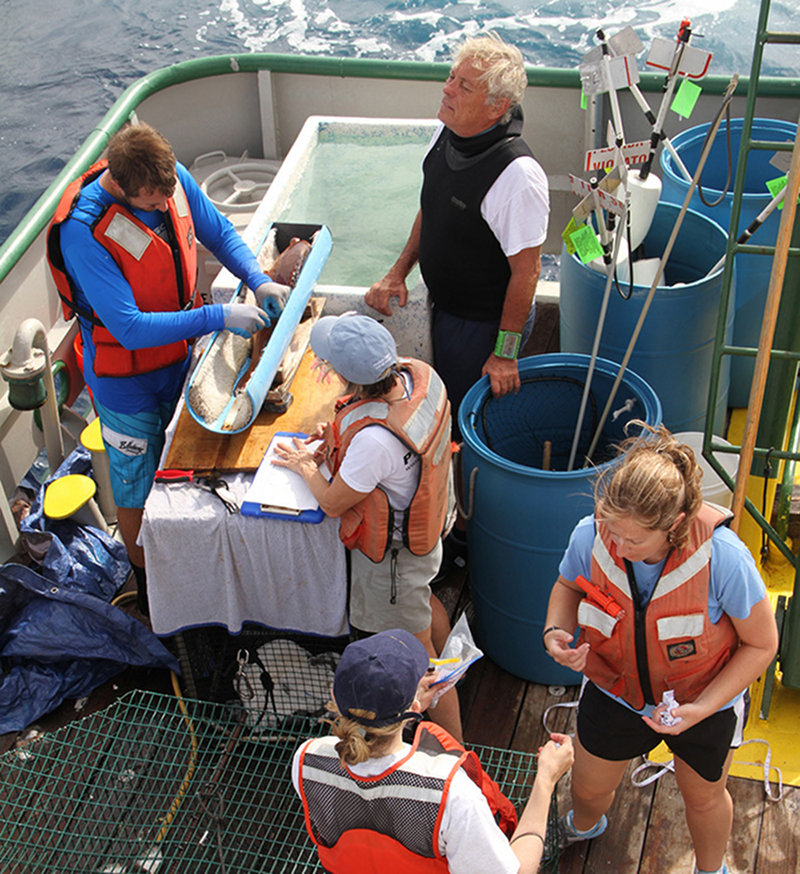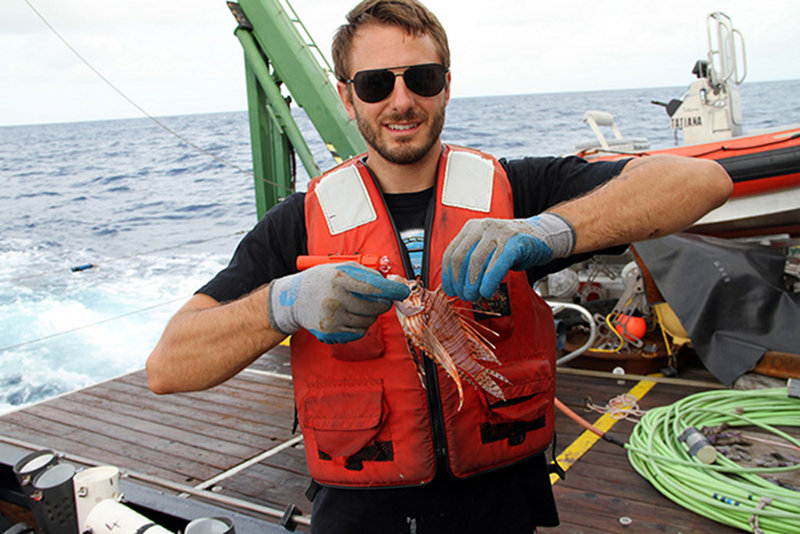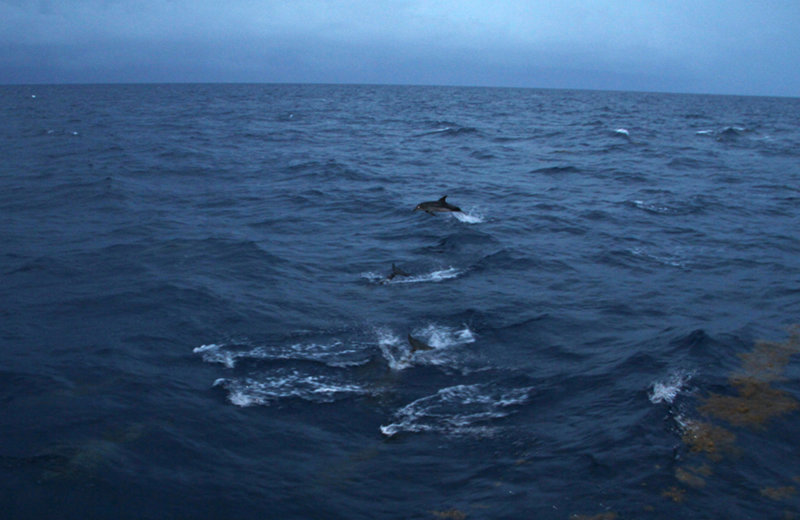
By Chris Malinowski, Florida State University
August 20, 2013
During a scuba dive to the fish traps, six spotted dolphins arrived on the scene and stayed with us until we left the water. Video credit: Brian Cousin, Florida Atlantic University Harbor Branch. Download (mp4, 5.9 MB).
Every day on the R/V Walton Smith, we start looking for places to set fish traps. This is a two-step process, first using high-resolution acoustic maps to locate areas of relief likely to attract fish, and then ground-truthing those sites during ROV dives, gathering information on fine-scale habitat and community structure. What we have learned is that sites within Pulley Ridge are highly variable, ranging from excellent fish habitat to areas covered with rubble and algae. This means that our catches are highly variable, as well.

The entire Fish Group “A Team” working-up a red grouper to get samples for mercury, genetics, and basic size/length. Image courtesy of Brian Cousin, Florida Atlantic University Harbor Branch. Download larger version (jpg, 939 KB).
Among the features of interest to us are the holes made by red grouper, which appear on the high-resolution maps. Red grouper actually excavate these holes, one mouthful at a time, creating craters 2-3’ deep and up to 15’ in diameter, making habitat for themselves while attracting both sessile and mobile invertebrates and other fish species as well.

Chris Malinowski holds up a red lionfish (Pterois volitans)that came up in one of the chevron traps. Once past the venomous spines, there is delicious, flaky white meat. The steward on the R/V Walton Smith prepared an awesome lionfish ceviche with our catch. There’s a big business opportunity there for someone... Image courtesy of Brian Cousin, Florida Atlantic University Harbor Branch. Download larger version (jpg, 590 KB).
Most days, we catch our targets -- red grouper and scamp -- while other days, we catch small reef fish, sand-associated species, or few fish at all. The lionfish (Pterois sp.) is one we capture regularly, although not in numbers as high as we expected, given their abundance revealed on ROV dives. Lionfish invaded Florida waters in the 1990s, spreading from shallow to deep waters throughout the western Atlantic and Gulf of Mexico at an extraordinary rate. Their presence creates many problems for native species, which are preyed upon and must compete with lionfish for resources. Doing our part to stem their spread, we sacrifice those we catch so the ship’s steward, Verna Skelton, can make ceviche, something both ship and science crews find delicious.

Spotted dolphins jump out of the water as they keep pace with the R/V Walton Smith. They like to gather at the two bows of our catamaran and ride the bow waves. Image courtesy of Brian Cousin, Florida Atlantic University Harbor Branch. Download larger version (jpg, 642 KB).
One day, as divers Chris Koenig, Brian Cousin, and I descended to our traps to vent captured fish in the blue waters of Pulley Ridge, we met six spotted dolphins (Stenella frontalis) who followed us closely. They appeared interested enough to stay with us until we returned to the ship. Such close encounters with spotted dolphins are fairly common, given their interactive and often carefree nature -- which differs from other dolphin species. My interest in them stems from my master’s research, during which I spent considerable time with spotted dolphins off Grand Bahama Island studying their foraging behavior. So I was particularly excited to see them here, a first for me in the Gulf of Mexico.
Interactions with dolphins and other pelagic species have not been uncommon during this research cruise. We have encountered spotted (Stenella attenuata) and bottlenose (Tursiops truncatus) dolphins, and are often followed by remoras (Remora remora) and schools of fishes such as pompano dolphin (Coryphaena equiselis). I actually had to swat one remora that tried suctioning to my face during a dive. The odd thing about remoras is that they have a highly modified dorsal fin on top of their heads that acts as an adhesive disc so that they can attach to other fishes, sharks, turtles, cetaceans, or anything else that moves, including boats. They do so primarily for protection and transport.
We’ll continue to update the mission log with fish trapping excitement.